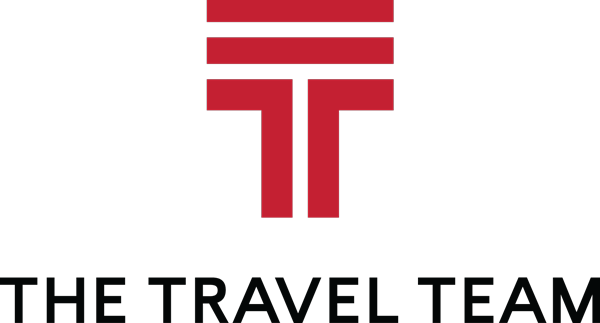Incentive travel programs are a powerful way to motivate employees and reward top performers. Offering a travel experience as recognition for exceptional work adds a tangible, exciting reason for teams to go above and beyond. For employers, these programs often deliver meaningful returns.
When executed effectively, travel incentive programs for employees foster productivity, enhance workplace culture, and boost employee retention, all while providing recipients with a well-deserved opportunity to recharge. Acknowledging and rewarding employees through memorable experiences helps reinforce a positive, performance-driven environment.
The challenge for corporate travel managers lies in creating a program that balances motivation, logistics, and budget. These programs must provide enticing benefits to employees while simultaneously advancing the company’s broader goals.


With years of experience in incentive travel planning and management, The Travel Team partners with organizations to design and deliver programs that inspire success at every level. Advisors Andrea Harris and Stacy Bolt have worked with several organizations to develop business travel incentive programs; here, they share insight into what it takes to build one that truly motivates and rewards your team.
Factors to Consider When Creating Travel Incentive Programs for Employees
The foundation of any successful incentive travel program lies in its strategy. Clear objectives, thoughtful planning, and careful budgeting are paramount to executing an effective experience for team members and corporate stakeholders.
Objectives and Return On Investment (ROI)
The first step in incentive travel planning is defining success. What behaviors or outcomes are you trying to encourage: boosting sales, improving customer service, or enhancing collaboration? Establishing these goals helps determine what metrics to track and how to evaluate the program’s return on investment.
“Before we start talking about destinations or budgets, we help companies define what success looks like,” Andrea says. “Whether it’s increased sales or better customer engagement, we want to make sure the incentive program aligns with real business goals.”
Audience
Understanding your participants is everything. Consider employees’ demographics, travel experience, and preferences to create a program that appeals to as many team members as possible.
“We often help clients think through what will really excite their team,” Andrea says. “A group of seasoned travelers might love an adventure trip, while others might value a relaxing resort experience.”
Timing
Timing can greatly impact both participation and logistics. Plan incentive trips during slower business periods to minimize operational disruption. The time of year may also influence destination options and pricing.
Budget
Balancing cost and impact is one of the most significant challenges of incentive trip planning. Companies need to determine how much they can invest per participant to create an experience that is both motivating and attainable. For sales-driven programs, measuring ROI is more straightforward; broader employee-based incentives may require a more qualitative evaluation of success.
“Budget is always one of the biggest factors,” Stacy shares. “But it’s not just about the dollar amount, it’s also about how far that budget can go toward creating an experience that’s motivating and attainable for everyone.”
Program Structure
Decide whether the program will be fully funded by the company or partially subsidized, and clarify participation requirements. For example, some programs include structured events or recognition ceremonies, while others allow more flexibility.
Selecting Destinations and Itineraries
Choosing the right destination is one of the most exciting and influential elements of incentive travel planning. The location sets the tone for the trip, generates enthusiasm among participants, and can directly impact overall engagement.
Popular options for incentive travel programs for employees include Caribbean and Mexican resorts, which are well-known for their warm climates, all-inclusive packages, and predictable costs for meals and beverages. These factors simplify planning and help ensure participants can fully enjoy the experience without unexpected expenses.
“All-inclusives are fantastic because they simplify budgeting,” Andrea points out. “Food and beverage costs are already accounted for, which eliminates a lot of uncertainty for corporate planners.”
The size of the group heavily influences destination choice and resort selection. Larger teams may require resorts with substantial capacity, while smaller groups often enjoy boutique resorts.
“For big groups, we look for properties that can accommodate everyone comfortably,” Stacy says. “Private events can be tricky at some all-inclusives, but larger resorts usually have the space and flexibility we need.”
Program managers must also consider travelers’ preferences. Will participants enjoy a relaxing beach retreat, adventurous excursions, or a combination of both? Tailoring the trip to the company’s objectives and the interests of its eligible employees helps ensure the program fulfills its mission for both employers and recipients.
Promoting Engagement Through Activities and Experiences
While a trip itself is a prize, incorporating activities can elevate the experience and foster meaningful connections between participants. Structuring engagement opportunities means employees not only enjoy the destination but also strengthen relationships and feel recognized for their contributions.
Carefully selected excursions, whether it’s a cultural tour, outdoor adventure, or team challenge, encourage networking, team bonding, and employee recognition beyond formal meetings. Unique events or themed activities can also set an incentive trip apart from typical meetings and events. Local culinary classes, a private celebration, or a destination-specific activity create memorable moments that reinforce the value of an incentive program.
While engagement is important, it’s equally crucial to leave participants with free time to explore, relax, and enjoy the destination at their own pace. Over-scheduling can diminish the sense of reward.
Planning Timelines and Logistics
Effective incentive travel planning requires careful scheduling and attention to detail. From securing the ideal destination to coordinating on-site experiences, advance preparation ensures the program runs smoothly and provides maximum impact for participants.
The timeline for planning an incentive trip depends on the size and complexity of the program. Early planning allows for better pricing, more flexible options, and smoother logistics overall.
“For major incentive trips, we recommend starting 1.5 to 2 years out,” Stacy explains. “That timeline gives you the flexibility to get the best rates and handle every detail smoothly.”
Even with meticulous planning, real-time support is essential. Clear, consistent communication and proactive problem-solving help participants feel supported and ensure the program stays on track.
“Communication is key,” Andrea notes. “Our clients know they can count on rapid responses and consistent professionalism before and during the trip.”
Partner With The Travel Team For Incentive Travel Management
Creating a successful incentive travel program requires expertise, creativity, and meticulous attention to detail. The Travel Team partners with companies from concept to execution, providing comprehensive incentive travel management services that make the process seamless for corporate travel managers while delivering a meaningful experience for participants. Working with advisors like Andrea or Stacy, you’ll experience tailored planning services, budget guidance, flexibility, and step-by-step support.


